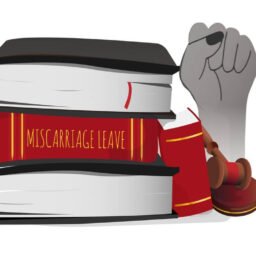INTRODUCTION
Mergers and Acquisitions (hereinafter ‘M&A’) are strategic transactions used by corporations to consolidate business organisations or its assets and liabilities, with an objective of achieving upper stakes in the market and to increase the economies of scale. M&A drives the business in a strategic direction. Over the past two decades, the global M&A activity has rapidly grown to substantial heights[1]. Mergers and acquisitions are two corporate restructuring tools that organizations use to increment corporate esteem and boost profit. It’s normal to discover the two terms utilized conversely in the business world. In any case, mergers and acquisitions are a long way from being very much the same. Indeed, the contrast among M&A is very unmistakable – from multiple points of view. A technical definition of the terms is as follows:-
Merger: – A merger is a combination that depicts a situation where two organizations join together, and one of the organizations stops to exist in the wake of becoming consumed by the other. Albeit the buying company might be an extensively unique organization after this process, it preserves its unique identity. Merger is undoubtedly a friendly process of restructuring, because it is advantageous for both the companies involved and also it will result in increased economies of scale and scope.The merger of Vadafone and Idea in the telecom industry is a recent example.
Acquisition:– An Acquisition or otherwise known as Takeover is an activity where one business entity purchases and assumes control over another concern. The purchase can be of an asset such a plant or machinery, or even procuring a significant stake in the target organization. Acquisition is different from merger since it does not require the incorporation of a new entity. For example, Walmart Inc. made a major acquisition when it purchased 77% of stake in Flipkart for 16 Million USD.
CONCEPTUAL OUTLINE OF MERGER
On the surface, M&A are pointed toward accomplishing better cooperative synergies inside the organisation to expand their ability and effectiveness. But merger is a different ball game for achieving the following objectives:-
- To easily sail through tough competition in the market.
- To improve business value chain and viability.
- To capitalize profits by restructuring the organisation.
- To introduce a new product line or increase supply reach.
- To secure more stratagems by obtaining tax benefits.
Merging entities ordinarily have equivalent say while talking about the terms are two-way and mutual which is focused on the corporate rebuilding. So, there is no buyer or seller in the said transaction. Interestingly, it is said that there is nothing more complicated than a merger. Mergers are definitely more confounded than just two business entities choosing to consolidate together. Many entrepreneurs and directors of an organisation without understanding the haphazard in the process of merger, dive into it and later they regret. So it is very much essential to understand the different types of mergers that they can resort to while making a deal.
Horizontal merger
A horizontal merger is when two organizations who sell a similar product or oblige a same segment meet up to build their span. Commonly, this sort of merger is done between direct rivals in the market. This merger is undertaken for reasons that have little to do with cash directly, rather done to decrease the competition in the marketplace. It is pertinent to note that a horizontal merger should occur between two organizations with a comparative product line and target market. Unlike other types of merger, a horizontal merger is considered to be the major pillar of modern competition regulation since it augments monopoly by banishing a rival and building up more grounded footprints in the target market[2].
Vertical Merger
A vertical merger or otherwise vertical integration is a merger between two entities that produce various goods or services along the inventory network toward the creation of an end product. This type of merger joins two companies that may not compete with one another, yet exist in a similar supply chain[3]. Usually this integration goes one step below the chain. For example, a distributor merging with a wholesaler.
Congeneric Merger
A congeneric merger happens when two entities or enterprises have a similar target market or business but offering various products. The entities engaged in this type of merger are usually not carrying on direct competitive businesses rather complementary products to the customers. By merging, these two entities will broaden their product line by utilizing both their business in the engaged sector. For example, the banking mammoth Citicorp based in the United States merged with Traveller’s Group in 1998 with the aim to expand their market base even though both the companies were dealing with a separate product line.
Conglomerate Merger
A conglomerate merger refers to the combination of two entities engaged in totally different activities and operating in unrelated industries. The principal motive(s) behind a conglomerate merger is the optimum utilization of business assets, augmentation of debt capacity limit, to undertake an increase in profit per share, and by bringing down the expense of capital. The merging organizations likewise hope to add to their general collaboration and efficiency by taking on the restructuring strategy of conglomerate merger. The merger between Walt Disney Co. and Capital Cities/ABC worth 19 billion USD is an example of conglomerate merger.
Reverse Merger
A reverse merger is the most well-known option for a private company to go public than adopting the normal route which is nothing but a complicated process of compliance. This is done by allowing a company which is privately held to acquire a substantial interest in a publicly held company. By doing so, the private company sheds out its private tag and acquires a newer tag as that of a public limited company. Thus the private company can save its wallet and even can access the capital markets without opting for an initial public offering to the general public. In 1970 this type of merger was adopted by the Turner Broadcasting Systems to take the company public by merging with a public company called Rice Broadcasting.
CONCLUSION
Merger and Acquisition assumes a significant part in corporate rebuilding as one particular type doesn’t fit all types of situations or problems. Having detailed all the types of mergers out there in the corporate world, it matters only when one thoroughly cross checks the suitable category in order to make the process of merger successful. Hence selecting the suitable type and performing proper due diligence will certainly make the M&A fruitful.
Author(s) Name: Aravind Prakash (School of Legal Studies, CUSAT)
References:
[1] Larson, C. (2020). Has the surface finishing industry reached a trillion dollar value globally? Transactions of the IMF, 98(5), 221–222. https://doi.org/10.1080/00202967.2020.1811559 Accessed 16th September 2021
[2] Kaplow, L. (2020). Horizontal merger analysis. https://doi.org/10.3386/w28189 Accessed 17 September 2021.
[3] Vertical M&As (n.d.). Merger and Acquisition Strategies, 91–106. https://doi.org/10.4337/9781786430687.00012 Accessed 17 September 2021.
















